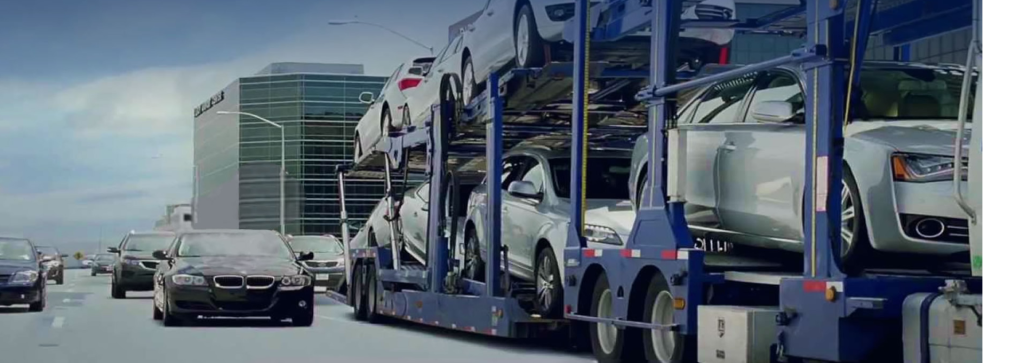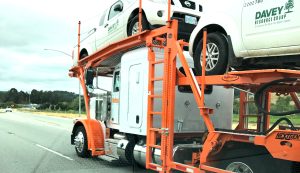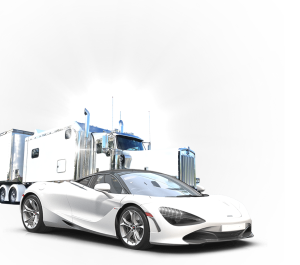Introduction To Seasonal Shipping Considerations
Weather Patterns And Their Impact On Shipping
When planning to ship a vehicle to Honolulu , understanding the weather patterns and their impact on shipping is crucial. The Pacific Ocean, which separates Honolulu from the mainland United States, is subject to varying weather conditions throughout the year that can significantly affect maritime transport.
Honolulu ‘s climate is generally mild and tropical, characterized by two main seasons: a dry season (kau) from May to October and a wet season (hooilo) from November to April. During the dry season, calmer seas prevail, reducing the risk of delays or damage during transit. This period offers more predictable weather conditions, making it an ideal time for shipping vehicles across long distances.
Clear skies and stable ocean currents contribute to safer and more efficient voyages.
Conversely, the wet season brings increased rainfall and higher chances of storms or even hurricanes. While hurricanes are relatively rare in Honolulu compared to other regions like the Caribbean or Gulf Coast, they do pose potential disruptions when they occur. The hurricane season in the Central Pacific typically runs from June through November, overlapping partially with both wet and dry seasons.
Shipping companies monitor these weather systems closely; however, unexpected disturbances can still lead to delays or rerouting of vessels.
Additionally, winter months can experience high surf on northern shores due to powerful storm systems originating in the North Pacific. These swells can impact port operations and create hazardous conditions for loading and unloading cargo.
In summary, while shipping a vehicle to Honolulu is feasible year-round thanks to modern navigation technology and forecasting methods, understanding seasonal weather patterns helps ensure smoother logistics planning by mitigating risks associated with adverse sea conditions.
Peak Tourist Seasons And Shipping Demand
Shipping a vehicle to Honolulu involves various considerations, one of which is the impact of peak tourist seasons on shipping demand. Honolulu ’s allure as a tropical paradise means that it experiences significant fluctuations in visitor numbers throughout the year, particularly during peak tourist seasons. These periods typically include summer months from June to August and the winter holiday season from mid-December to early January.
During these times, the influx of tourists not only affects local businesses and accommodations but also places additional pressure on transportation and shipping services.
During peak tourist seasons, the demand for vehicle shipping services can increase substantially. This surge is often due to a combination of factors: vacationers seeking extended stays who prefer having their own vehicles for convenience, seasonal workers arriving for temporary employment opportunities, and residents returning home or relocating permanently. The heightened demand can lead to longer wait times for available shipping slots and potentially higher costs due to increased competition for limited space on cargo vessels.
Furthermore, carriers may adjust their schedules or prioritize shipments differently during these busy periods. It’s essential for individuals planning to ship their vehicles during peak tourist seasons to book well in advance. Early reservations can help secure a spot and potentially lock in better rates before prices escalate with rising demand.
In addition to pre-planning, flexibility with travel dates can also be beneficial. If possible, consider scheduling your vehicle shipment just before or after peak periods when demand may taper off slightly. By understanding and anticipating these seasonal variations in shipping demand linked to Honolulu ‘s peak tourist seasons, you can better navigate the complexities involved in transporting your vehicle smoothly and efficiently.
Hurricane Season: Risks And Precautions
Hurricane season, which typically spans from June to November in the Central Pacific region, is a significant factor to consider when shipping a vehicle to Honolulu . During this period, the risk of tropical storms and hurricanes increases, potentially impacting shipping schedules and the safety of your vehicle.
One primary concern is the disruption of shipping routes. Hurricanes can cause rough seas and strong winds, making it dangerous for cargo ships to navigate. Consequently, shipping companies may delay or reroute shipments to avoid hazardous conditions. These delays can extend the transit time significantly beyond the original estimate. It’s advisable to stay in close communication with your shipping provider during this time to receive real-time updates on any changes.
The physical safety of your vehicle is another critical consideration. High winds and heavy rains associated with hurricanes can lead to water damage or even more severe physical impacts if a vessel encounters extreme weather conditions while en route. To mitigate these risks, ensure that your chosen shipping company has robust protocols for securing vehicles on board and that they offer comprehensive insurance coverage.
Additionally, consider timing your shipment outside the peak hurricane months if possible. While avoiding hurricane season altogether might not always be feasible due to personal timelines or urgent needs, planning ahead can minimize exposure to potential disruptions.
Finally, it’s essential to have contingency plans in place. This includes having alternative transportation arrangements upon arrival in Honolulu if there are unexpected delays and knowing how you will handle any damage claims should they arise.
In summary, while shipping a vehicle during hurricane season presents certain risks, thorough preparation and choosing a reputable shipping company with strong safety measures can help mitigate these concerns effectively.
Off-Peak Seasons: Cost And Availability Benefits
Shipping a vehicle to Honolulu during off-peak seasons can offer several advantages, particularly regarding cost and availability. Off-peak seasons typically fall outside the major holiday periods and summer months when travel demand surges. During these quieter times, shipping companies often have more available slots and may reduce their rates to attract customers, leading to significant savings.
Cost is one of the most compelling benefits of choosing an off-peak season for vehicle shipping. Shipping companies generally experience lower demand during off-peak times, such as late fall or early spring. To fill their shipping capacities, they might offer discounts or promotional rates that can make the overall expense more manageable. These reduced costs are not limited to just the shipping fees; associated expenses like insurance or port charges might also be lower due to decreased operational pressures.
Availability is another crucial factor enhanced during off-peak seasons. With fewer vehicles being transported, shippers have greater flexibility in scheduling pick-ups and deliveries. This increased availability can translate into shorter wait times for both departure and arrival dates, providing a more convenient timeline for your move. Additionally, there’s less likelihood of delays caused by overbooked transport services or congested ports.
Furthermore, during off-peak periods, customer service tends to be more personalized and responsive since staff are not overwhelmed by high volumes of inquiries and logistics management tasks. This improved communication can lead to smoother coordination and fewer misunderstandings throughout the shipping process.
In conclusion, opting for an off-peak season when shipping your vehicle to Honolulu can yield substantial cost savings and enhanced availability benefits, making it a practical choice for budget-conscious individuals seeking efficient service.
Vehicle Preparation For Seasonal Conditions
When preparing to ship a vehicle to Honolulu , it is crucial to consider the seasonal conditions that may affect both the journey and the vehicle itself. While Honolulu enjoys a relatively consistent climate year-round, with mild temperatures and moderate rainfall, the conditions at your point of origin and along the route can vary significantly depending on the season.
During winter months, if you’re shipping your vehicle from regions prone to snow and ice, additional precautions are necessary. Ensure that your car’s antifreeze levels are adequate to prevent engine block damage in freezing temperatures before it reaches a warmer Honolulu an climate. It’s also advisable to thoroughly clean your vehicle’s undercarriage to remove any salt or de-icing chemicals that could cause corrosion during transit.
Springtime can bring unpredictable weather patterns, including heavy rains and storms. This could lead to potential delays in shipping schedules or changes in departure times for sea transport. Make sure your vehicle is properly sealed against moisture; check window seals and door gaskets for any potential leaks that could allow water into the interior.
Summer months, characterized by higher humidity and intense sunlight, present their own set of challenges. Protecting your car’s exterior paint job from UV damage is essential; consider applying a high-quality wax before shipment. Additionally, ensure tire pressure is checked and adjusted according to manufacturer recommendations since fluctuations in temperature can affect tire inflation levels.
Autumn often heralds hurricane season in the Pacific region from June through November. While rare direct hits on Honolulu occur infrequently, it’s prudent to stay informed about potential tropical storms during this period as they may cause interruptions in shipping schedules or necessitate rerouting.
In all seasons, comprehensive preparation tailored to specific climatic challenges ensures that your vehicle arrives safely and in optimal condition when shipped to Honolulu .
Choosing The Right Shipping Company For Seasonal Needs
When it comes to shipping a vehicle to Honolulu , choosing the right shipping company is paramount, especially when considering seasonal variations. The maritime routes and weather patterns that influence these routes can significantly impact the timing and safety of your vehicle’s journey. Therefore, selecting a company with expertise in navigating these seasonal challenges is crucial.
Firstly, it’s essential to partner with a shipping company that has a proven track record of operating year-round services to Honolulu . Companies that have extensive experience are more likely to understand the intricacies of seasonal weather patterns, such as the Pacific hurricane season from June to November. These companies will have contingency plans in place for delays or rerouting due to adverse weather conditions.
Moreover, an experienced shipping company will be adept at handling peak seasons when demand for vehicle transport surges. During tourist high seasons or major holidays, there can be an increased volume of shipments, which may lead to longer wait times and higher costs. A reliable company will offer transparent scheduling and pricing models that account for these fluctuations without compromising service quality.
Additionally, communication is key when dealing with seasonal variables. Opt for a shipping provider known for excellent customer service and regular updates on your vehicle’s status. This ensures you are kept informed about any potential delays or changes in itinerary caused by seasonal factors.
Finally, consider companies that provide flexible insurance options tailored to different times of the year. Seasonal storms and rough seas can pose risks to transported vehicles; thus, having comprehensive insurance coverage during these periods offers peace of mind.
In essence, selecting the right shipping company involves evaluating their experience with Honolulu an routes across all seasons, their ability to manage peak demand efficiently, their commitment to communication, and their provision of adequate insurance coverage for varying conditions throughout the year.




